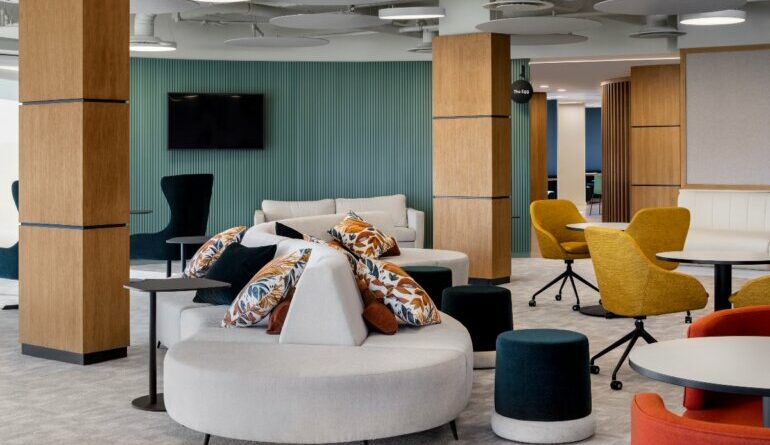SA’s most competitive businesses are creating a welcoming, respectful, and inviting ‘return to work’ environment
Managing hybrid models and the return to work are at the top of business agendas across the globe. Reimagining the sustainable office of the future, a place people want to be to create, collaborate and find personal fulfilment requires a re-think of workspaces. For Steven Fish, Director of Tétris Furniture Solutions, a specialist division of Tétris Design and Build South Africa, furniture plays an important role in shaping a company’s ability to create a welcoming, respectful and inviting ‘return to work’ space.
As we step into the post-pandemic office, it is clear people derive a sense of community and connection when working with peers and colleagues in person. In fact, according to international research conducted by JLL, 60 percent of office workers want to work in a hybrid style and 55 percent are doing so already. In a typical working week, employees expect to work in the office around 2.7 days.
Five ways furniture is creating the hybrid office of the future:
1. Furniture is central to creating informal, flexible, and innovative spaces for working, collaborating, and fostering cultures of connection and ideation. The design of furniture settings and individual pieces help create inviting dialogue spaces that help people relax and interact and connect with colleagues. Furniture is fast becoming the social fabric of the workspace through the introduction of ottomans and couches, soft stools on wheels that can be clustered for meetings, dual purpose mini auditoriums or workshop spaces.
2. Softer furnishings that bring the comfort of home into the workspace and actively support diverse workstyles. This trend, now better known as resi-mercial is driven by the need to bring home comfort into the office space. It includes couches equipped with power outlets and supported by laptop tables, the use of curtains to divide and soften spaces and meeting room chairs styled for ergonomic comfort and support for longer meeting or working away from desk periods. Because of this, we are seeing furniture being designed with health and wellbeing in mind including sit/stand desks, new types of seating, increasingly sophisticated ergonomically adjustable chairs, and a range of diverse types of workspaces to accommodate the varying types of work and ways of working that are suited to individual needs.
3. A broader mix of meeting rooms to host in-person interactions as well as digital meetings call for an office with an array of different designs of meeting tables and meeting room chairs. This affects the very shape of meeting rooms, focus booths, and collaboration spaces. Examples include taller bar stool type chairs with circular tables may face directly to a large screen for digital meetings while more comfortable lounge seating with mobile digital whiteboards, carpets. lamps and artworks may be required for creating a relaxed dialogue-orientated space for interpersonal connection.
4. Office furniture designed for individual privacy spaces and focus rooms. Smaller rooms with a single chair or two with bureau-style tables or counters, are being coupled with soft lamps and high acoustic detailing to enhance private conversations, one-to-one digital meetings or focused work. Sit-stand stools with shelves in vertical booths allow for short but confidential phone calls.
5. Sustainably built, refurbished or sourced office furniture has a role to play in fulfilling a company’s ESG value proposition. For businesses downscaling or relocating, our furniture experts do extensive audits to establish what furniture can be refurbished to remove the cost and carbon footprint of buying everything new. Feature pieces are sourced from an extensive network of global and local brands with sustainable materials and tracked manufacture and assembly processes. Where possible, local designs and shopfitting are commissioned or recommended to support the local furniture economy.
“We’ve seen first-hand the results that investment in well-designed furniture solutions provide,” says Fish. “Improved performance, well-being and physical comfort, plus the stimulus of an aesthetically beautiful environment all contribute to better workspaces which are worth pursuing as hybrid work, and the office, remains central to working life.”




